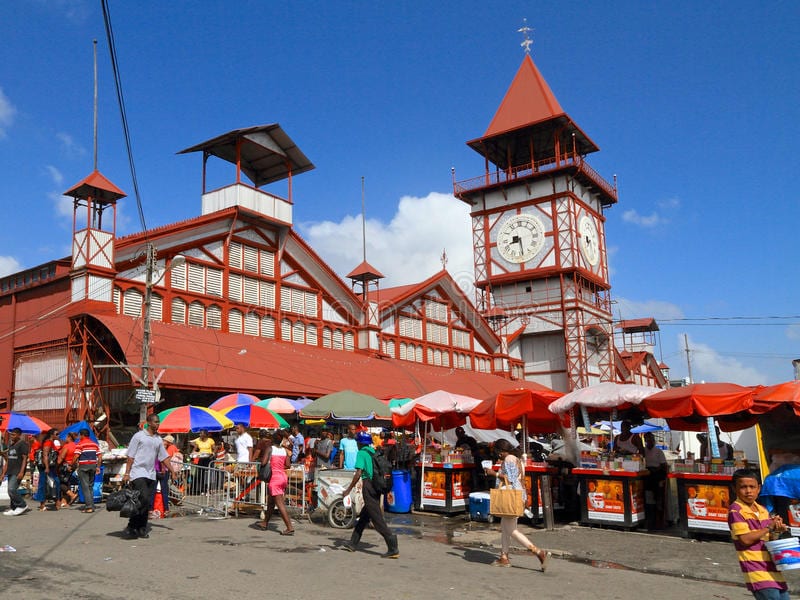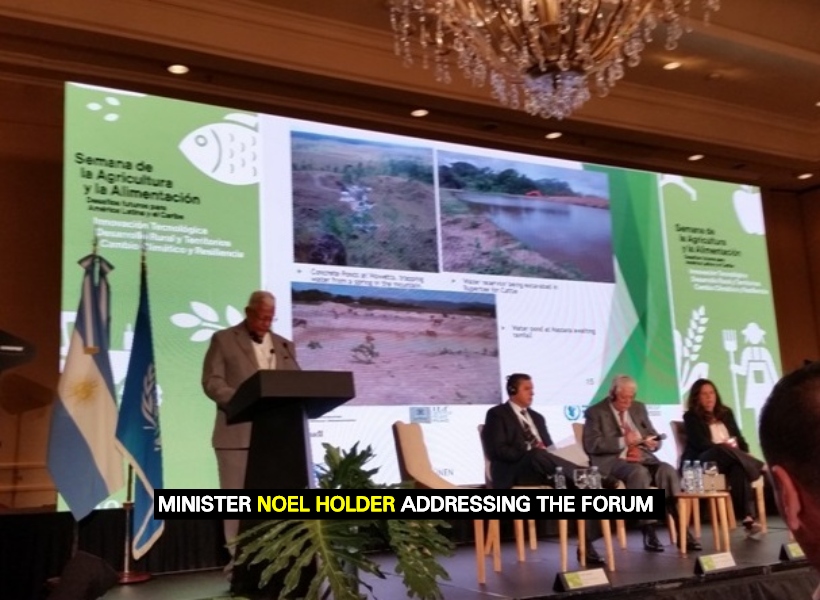The Food and Agriculture Organization (FAO) has projected that by 2030 the world will be faced with a 40 percent global water deficit under the business-as-usual climate scenario.
Currently, groundwater provides drinking water to at least 50 percent of the global population and accounts for 43 percent of all of the water used for irrigation. In addition, inappropriate use of fertilisers and pesticides has translated into water pollution, affecting rivers, lakes and coastal areas.
But according to Minister of Agriculture, Noel Holder, “Agriculture is one of the pillars earmarked to forge a path of sustainable development for Guyana and the Caribbean. It is of fundamental significance to ensure food and nutrition security, and represents a viable mainstay on which to promote a green economy for our country,” Holder posited.
The Minister’s remarks were forthcoming as he addressed the ‘Week of Agriculture and Food’, held in Argentina on November 22 and 23, 2018.
He noted that such summits augurs well for governments of Latin America and the Caribbean to learn, engage, network, and grow – as it highlights the interface for collaboration as the countries work to expand its production base in a sustainable manner.
The agriculture sector is undoubtedly one of the most important sectors in Guyana and continues to contribute over 16 percent to the economy. It is a sector that is crucial in terms of reducing unemployment, poverty alleviation and for bolstering economic development. Significantly, sustainable food security is a goal that the sector aims to achieve by improving the quality and quantity produced by the crop, livestock and fisheries sub-sectors.
Guyana’s vast tracts of productive land present enormous opportunities for growth. However, Holder noted, high volatility in international commodity prices and extreme weather events, in recent years, have affected the agriculture sector.
“With a land area of 83,000 square miles but with almost 90 percent of its population occupying a strip of land approximately 200 miles long and 30 miles in width, and having 75 percent of the main economic activities concentrated on this low-lying coastal zone situated some six feet below sea level, Guyana is particularly vulnerable to the negative effects of climate change on its economy, human livelihoods and ecosystems,” he said.
Climate change is anticipated to have potentially disastrous impacts on the economic viability of the agricultural sector. The potential negative impacts that climate change can have on Guyana is significant if profound changes are not agreed upon.
The Argentina event was structured around four thematic areas: food systems and the paradox of obesity and hunger in the region; effective strategies to eradicate the scourge of extreme rural poverty and move towards sustainable rural development; the challenges of resilient rural societies and a new agri-food economy adapted to climate change; and the technological challenges of the future in agricultural and rural development.











